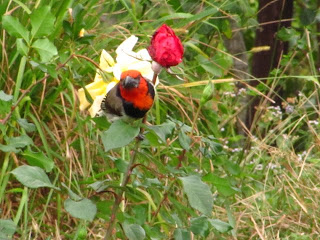Valley Guardians is an extension of being alive and living in the Eastern Cape on the WildCoast of the Transkei
Having farmed with cash crops in the Umkomaas valley and then the Camperdown area before moving to the Transkei, we had discussed creating an awareness of and educating both the children and their parents in the area about the environment, the various life forms that we share our living with and the RESPONSIBILITY this living brings with it.
After much deliberation, discussion, brainstorming, hashing and re-hashing, we came to the conclusion that the starting point had to be that of identifying and logging everything around us...because not doing so would make the doing vague and directionless.
And it seemed so simple. We would take photographs of everything we see, write down the details of when, where, what, how in a logbook and then...
Well, needless to say with just two people doing this (one working full-time and the other developing and maintaining food gardens, extending and adapting the house, doing household chores, cooking... you know, standard, everyday stuff you have to do to stay alive), it was going so slow it seemed it was hardly happening.
Then Rabies interrupted the journey and my youngest son (home for the holidays from school in Johannesburg) and I survived, alone. A year was spent in mourning and I returned home to pick up where we had left off. Bolts on doors, fencing and re-establishment of the food gardens are a quick summary of what has happened at home in the valley over the last two years. Life's journey has many interruptions though, and it has been a year since my mother survived a gall bladder operation and six months since I survived an attempted rape and knife wounds.
Each time I thought the interruption would bring the journey to a grinding halt...
...yet merely existing could never be enough. Life is meant for living; giving it everything you've got! And so the journey continues, with the Valley Guardians taking shape one moment at a time, and each moment is precious.
Mission Statement
To identify and log the Umngazi Valley, its contents and inhabitants (human, animal, reptile, insect and plant-life);
To encourage wildlife, environmental and conservation guardianship by accepting the responsibility this brings;
To clean up the valley as part of this responsibility;
To create a safe-haven for life-forms under threat or injured;
To establish a training programme for Valley Guardians;
To create awareness and educate field and marine guides, where possible with sponsorship;
To encourage subject-specific specialists to visit and mentor community members on an ongoing basis;
To investigate sustainable projects that will benefit the community;
To create a working plan, updated, reported on and adjusted .
Guardianship Outline
* Request to area Chief to become Valley Guardian Chief;
* Request to each headman and community committee member to become a Valley Guardian;
* Trainee Guardians - Young adults - 20yr and older, to be encouraged to join the training to become Guardians and apply for acceptance to a Field and Marine Guide study programme (correspondence);
* Opportunity for live-in positions for 4 junior and 2 senior trainee Guide Guardians;
* Teen Guardians - 13 to 19yr old;
* Cadet Guardians - 5 to 12yr old.
All Guardians to follow a three month basic course in environmental care and earn points for each section completed before being able to join the field study groups and contribute to the mapping of the Valley.
Environmental Care Programme to consist of, for instance, Litter Clean-up, Recycling, Vegetable Gardening as well as Logging the Valley Projects, with three weeks per project and 15 attendance and participation points to be earned before qualifying as an entry level Guardian.
So far, so good...and now for the real work.
Posts will follow, acting as the log, where possible accompanied by photographs and of course, information will be researched to explain, expand on and educate.




















